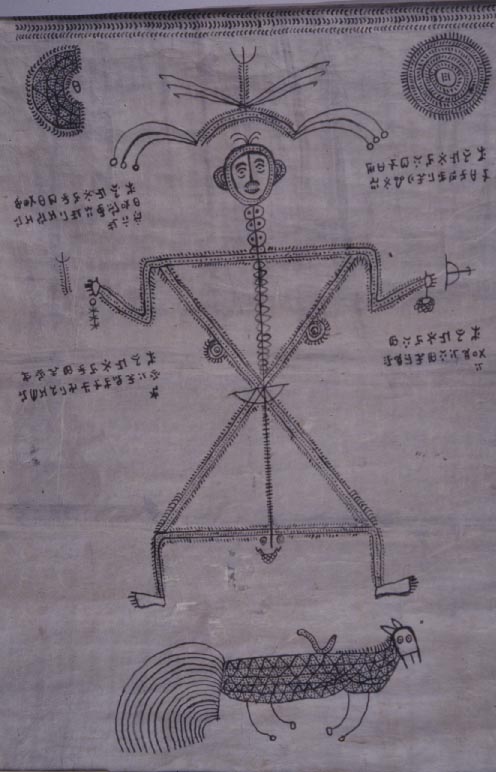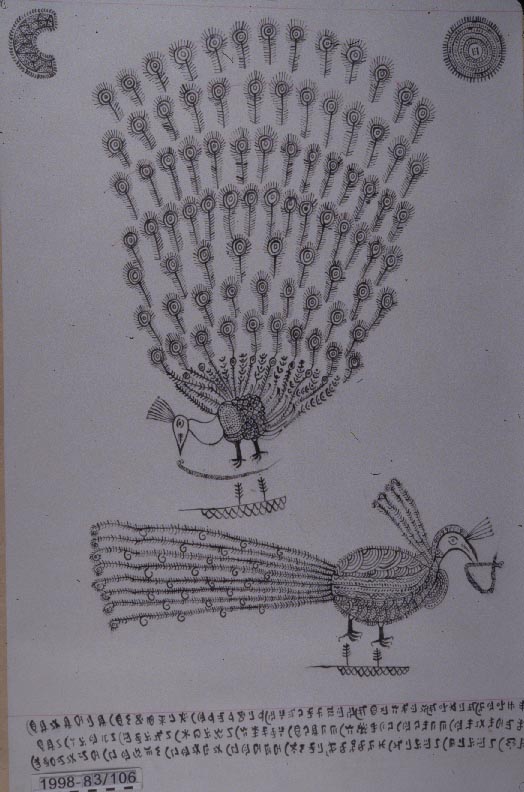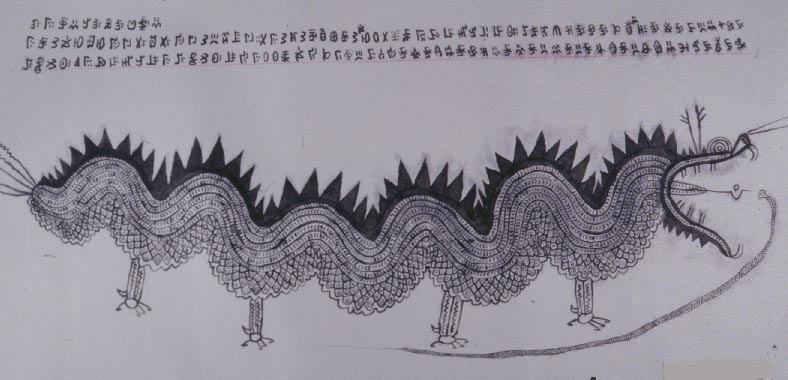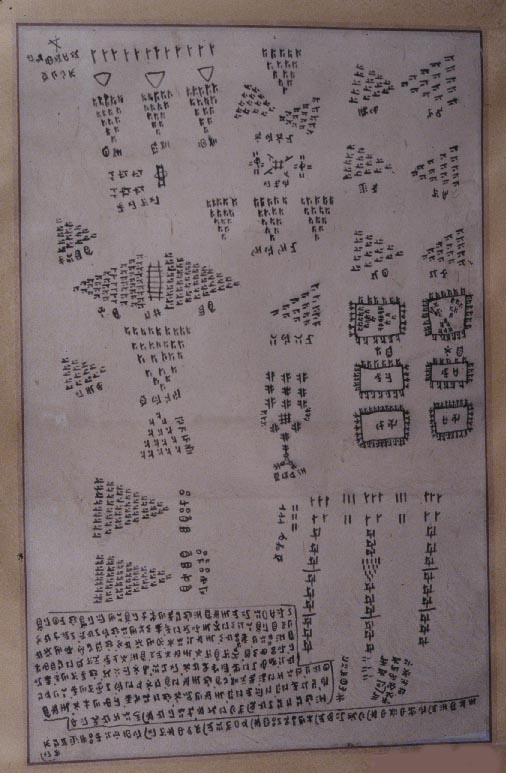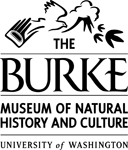Painting - Zhyge Alu: by Qubi Shuomo
In the Yi creation epic Hnewo Teyy, the hero who
shoots the suns, Zhyge Alu was born at the dragon hour on the dragon
day of the dragon month in the dragon year, the son of a dragon and an
eagle, and has supernatural strength and special abilities to bring
down magic and suppress ghosts, and is particularly fond of working for
others' sake to root out harm and persevere on the rightful road.
Every Nuosu household has stories and myths of him; women and children
know them too. And in the spirit pictures drawn by bimo, his form dominates the structure of the picture; they use strong, simple
lines to capture his magical powers and his strange and divine efforts
in the suppression of ghosts. This is his picture as frequently
seen in bimo ritual texts and in the spirit tablets used in their
ceremonies. It was drawn by the eminent bimo Qubi Shomo.
Zhyge Alu is often accompanied by his two primary supernatural helpers, the magic peacock Shuotnievoplie and the python Bbahxa.
A diagrammatical Illustration:
1) In the middle is Zhyge Alu, with a copper helm on his head, copper spear, arrow, and net in his hand, with his head touching the sun and moon and his feet astride the great earth. He cuts a majestic and imposing spirit figure; in myth he is a great god who governs all extraordinary events in the human world. He is also the spiritual aid of bimo in their rituals to cure leprosy and to cast spells on ghosts and enemies alike.
At the bottom is Zhyge Alu's nine-winged flying horse Symu Ddurndi, whose name means "long heavenly wings"; it is said that he spends three days in heaven, three days on earth, and three days in the air, that he can transform himself into clouds, thunder, rain or snow. Zhyge Alu rides this horse to subdue ghosts and demons in heaven and earth.
Back to Top
Zhyge Alu is often accompanied by his two primary supernatural helpers, the magic peacock Shuotnievoplie and the python Bbahxa.
A diagrammatical Illustration:
1) In the middle is Zhyge Alu, with a copper helm on his head, copper spear, arrow, and net in his hand, with his head touching the sun and moon and his feet astride the great earth. He cuts a majestic and imposing spirit figure; in myth he is a great god who governs all extraordinary events in the human world. He is also the spiritual aid of bimo in their rituals to cure leprosy and to cast spells on ghosts and enemies alike.
At the bottom is Zhyge Alu's nine-winged flying horse Symu Ddurndi, whose name means "long heavenly wings"; it is said that he spends three days in heaven, three days on earth, and three days in the air, that he can transform himself into clouds, thunder, rain or snow. Zhyge Alu rides this horse to subdue ghosts and demons in heaven and earth.
Back to Top

